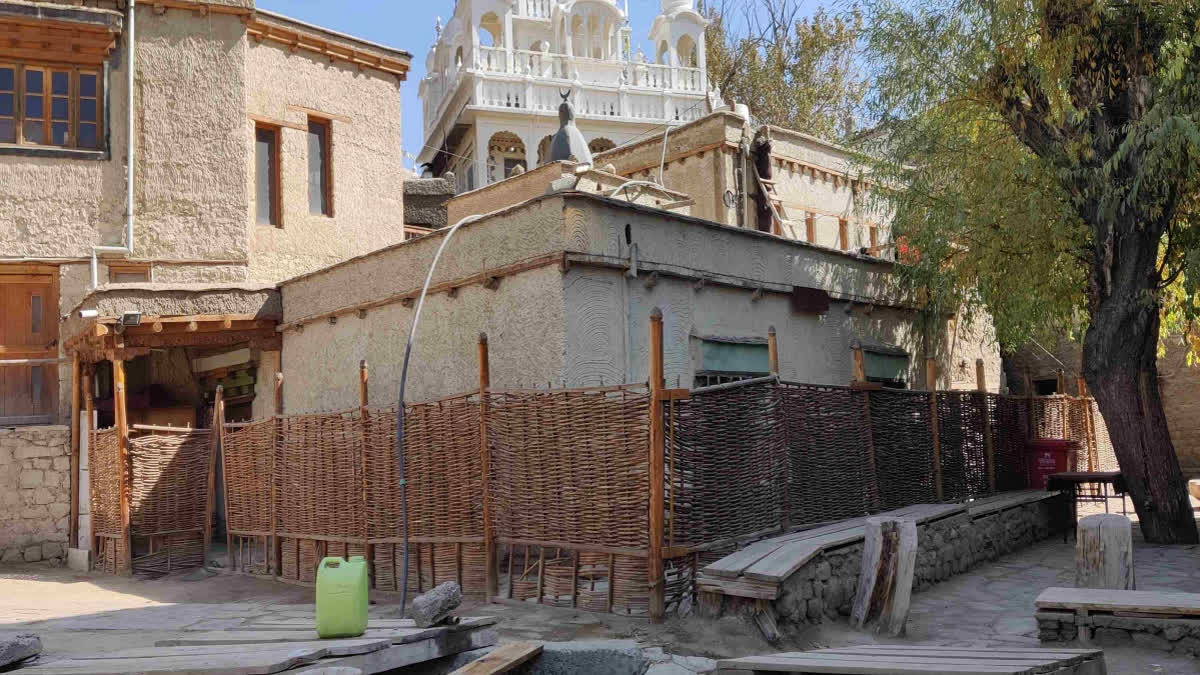Leh:The Tsas Soma Mosque, located in the heart of Leh, Ladakh, is a significant historical monument that dates back to the 17th century. It was constructed during a period when Leh was a thriving hub of trade along the ancient Silk Route, attracting traders from Central Asia, Kashmir, Punjab, and beyond. These traders, many of whom were Muslims, needed a place to gather and offer prayers, which led to the establishment of the Tsas Soma Mosque. The mosque was used as a place of worship by women and also served as a Madrasah.
Today, the Tsas Soma Mosque continues to serve as a place of worship for the local Muslim community. The mosque stands as a reminder of Ladakh's diverse and interconnected past, where trade, faith, and culture came together.
In 2007, the Tibet Heritage Fund (THF) collaborated with the Anjuman Moin ul-Islam Society to restore Leh's oldest Mosque, Masjid Sharif, located in the Tshas Soma garden in the Chutay Ranthak area of the old town.
Dr. Abdul Qayum, President of Anjuman Moi Ul Islam, said, "Leh was at the heart of this trade network, attracting merchants from Lhasa, Punjab, Kashmir, and likely even China. Traders from as far as Iran and Europe passed through, while many Central Asian traders, especially from the Nubra Panamik region, made regular visits."
"A large number of these traders were Muslims, and they would gather with their caravans, including camels, at Tsas Soma. The 'Tandoor' bakeries which is known in Central Asia continue to exist in Leh. We have worked to restore and preserve this mosque in its traditional form. The call to prayer (azaan) and the five daily prayers (namaz) are still observed here," added Qayum.
Dr Noor Mohd, executive member of Anjuman Moin Ul Islam said, "This mosque is the one of the oldest public mosques in Leh town. This Tsas Soma area used to be one of the camping grounds for Central Asian caravans. Another camping ground was near the police station and CMO office, the third was near the taxi stand Zangsti. These three were mostly used by Central Asian traders and their animals were also kept there. The fourth was Balkhang where people from Baltistan used to stay there."
He added, "The mosque was functional till the 1950s and later on it was in dilapidated condition and was abandoned because the main mosque was completed by that time. Later, THF in collaboration with Anjuman Moin Ul Islam restored and expanded the mosque. The main door and the beams are kept original and it is very old. This mosque, once a centre for public worship, also witnessed numerous barter trades conducted by the visiting caravans."
